This Little-known Chain of 300-plus Volcanic Islands Is One of the Most Underrated U.S. Cruise Destinations — Here's How to Visit
Hurtigruten Expeditions is now cruising the far reaches of Alaska, including the astounding Aleutian Islands.
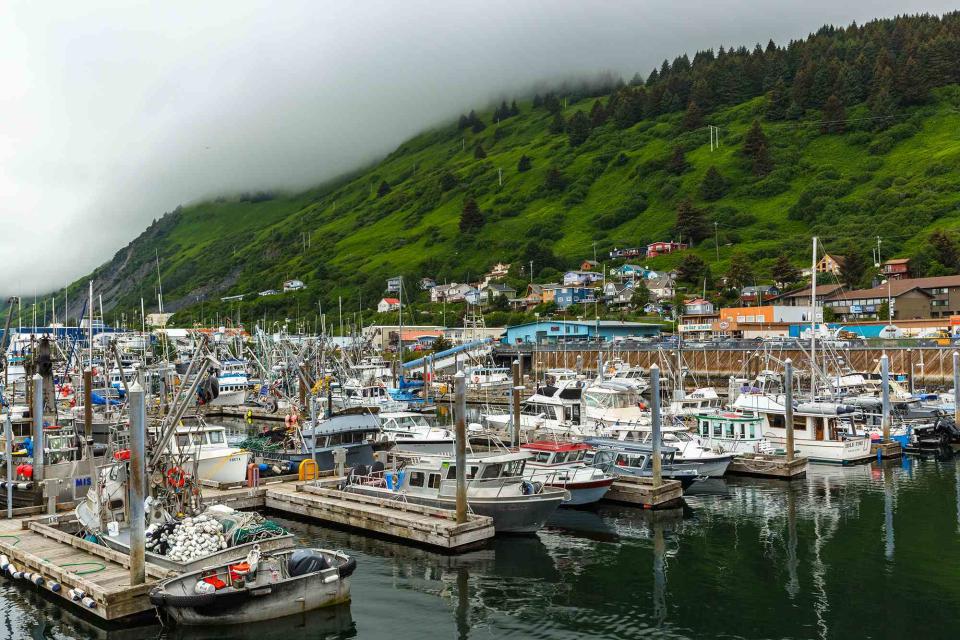
Susan Portnoy/Travel + Leisure
“More people have climbed Mount Everest than have set foot on Saint Matthew Island,” said Frederico Marcelino, our cruise’s expedition leader, before the 10-person zodiac slid ashore. A veil of fog shrouded the smooth-stoned beach and the jagged rocks beyond. Hundreds of polar bears once roamed the coast until hunters killed them long ago. Fortunately, the rare endemic McKay's Bunting escaped notice. A few enthusiasts spotted the petite white bird with black markings, with help from the boat's ornithologist, Lancy Cheng, and were positively giddy, calling it the “Holy Grail'' of sightings.
It’s no wonder. In the heart of the Bering Sea, approximately 200 miles off Alaska's southwest coast, few birders make it to this uninhabited speck of land. If I needed a definition of the middle of nowhere, this was it.
Aleutian Islands, Alaska
Powerful and intimate, The Museum of the Aleutians uses storytelling, traditional tools, clothing, and historical artifacts to celebrate the lives of its Indigenous people through the ages.
Chignik residents, boat captains, and their crews make special trips for The Bakery’s tantalizing selection of freshly made donuts.
You can only get to Geographic Harbor by float plane or boat, but eye-popping mountain views and a high density of brown bears are worth the effort.
The 221-acre Fort Abercrombie National Historic Site has relics from World War II, plus boating facilities, campsites, and hiking trails that pass along mossy forests, rocky beaches, and stunning cliffside views.
The oldest Russian-built Church standing in the U.S., the Russian Orthodox Holy Ascension of Our Lord Cathedral, has more than 700 pieces of traditional iconography, some from the 16th century.
Saint Matthew marked the first stop of an 18-day HX (Hurtigruten Expeditions) cruise aboard the hybrid-powered, 530-passenger MS Roald Amundsen. The itinerary, launched in the summer of 2022, ups the ante with an exploration of Alaska’s farthest reaches, bringing passengers to rarely visited ports along the Inside Passage.
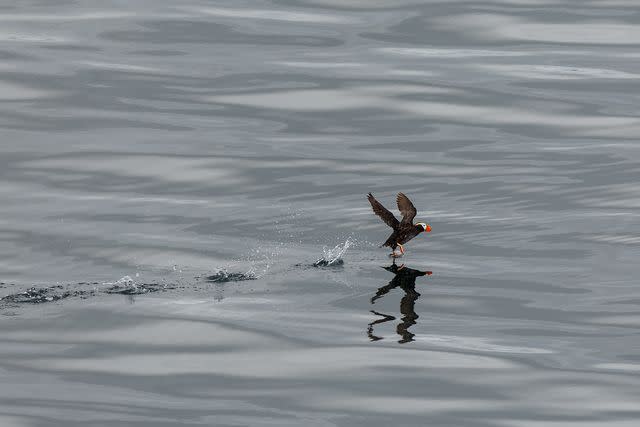
Susan Portnoy/Travel + Leisure
From Nome to Vancouver (sailing the reverse is also an option), the voyage travels by way of the Bering Sea and the Gulf of Alaska, highlighting the 1,200-mile Aleutian archipelago that separates the two turbulent seas. Hurtigruten’s relatively small, ocean-capable vessel (meaning it can sail across large bodies of water) makes the trip possible. The ship’s relatively small size enables it to go where larger boats cannot, and with fewer passengers, it's less disruptive to coastal communities,
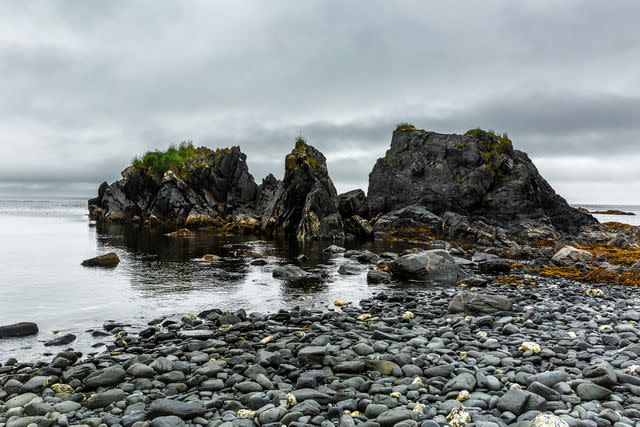
Susan Portnoy/Travel + Leisure
Curving like a cat’s tail toward Russia, nearly 300 volcanic islands make up the Aleutian chain. The native Unangax? (Aleuts) inhabited the area for millennia before Russian colonization and the introduction of Christianity in the 18th century. The territory was sold to the United States along with Alaska in 1867. Today, only 8,000 people reside in the Aleutians; about half occupy remote villages scattered throughout the archipelago.
The other half live in the Port of Dutch Harbor on the Island of Unalaska, midway along the archipelago and our southernmost destination. Its population of around 4,400 makes it the biggest city in the region. Yet I only saw a handful of other humans as we sailed toward the dock at dawn on a Sunday. As the world’s largest fishing port by volume, I naively thought the harbor would be bustling with crews working on boats like in scenes from Deadliest Catch — the town is the setting for Discovery’s popular reality show. I only saw five fishermen on the dock re-webbing their Kia-sized crab pots.

Susan Portnoy/Travel + Leisure
The town’s tranquility belied Unalaska’s dark past. In 1942, six months after Pearl Harbor, Japanese fighter planes bombed military installations in Dutch Harbor. The attack earned the unfortunate distinction of being the only other assault on American soil in World War II. The Indigenous Aleuts were forcibly evacuated by the government and shipped to internment camps. The Aleutian Islands World War II National Historic Area Visitor Center chronicles the three-month battle dubbed the “Aleutian Campaign.” On display were archival images, personal mementos, and compelling firsthand accounts of the devastation and its aftermath. I found an original Western Union telegram informing a mother that her son was missing in action to be particularly moving.
More fortunate was the 130-year-old Russian Orthodox Holy Ascension of Our Lord Cathedral, which survived unscathed. It’s the oldest Russian-built church standing in the U.S. and still conducts services in English, Aleut, and Slavonic. A native Unalaskan and ordained reader, Julia Duskin, led me through two interior chapels housing more than 700 pieces of religious iconography, some from the 16th century. Pointing toward a row of large, nearly opaque icons, she explained that interned residents donated them to the church. Over time, the protective shellac they applied oxidized, making them difficult to see.

Susan Portnoy/Travel + Leisure
Working our way north, we moored near the village of Unga. In staggered groups of about 60, we explored 20 or so structures in varying stages of collapse. The crumbling settlement sat on a grassy promontory at the foot of a towering mountain. Compared to the peak, they looked like broken toys (for safety reasons, we were not allowed to enter). Three hundred people of Russian, Aleut, and Norwegian descent settled in Unga during its early 20th-century heyday. But when the cod and mining industries collapsed, the population dwindled. By the 1950s, the last residents had gone.
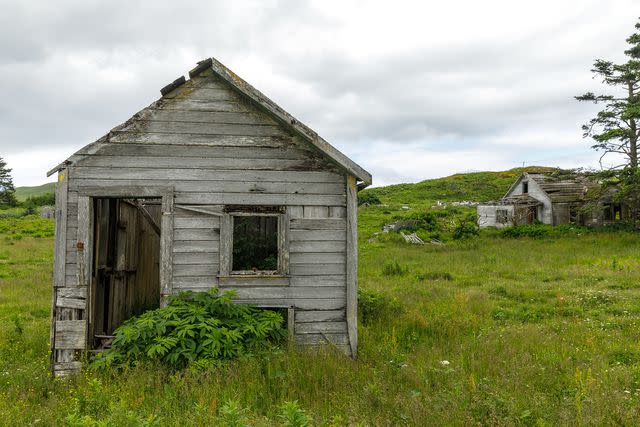
Susan Portnoy/Travel + Leisure
That evening, a pod of humpbacks was lunge-feeding off the bow of the ship, prompting me to excuse myself from dinner to look. For an hour, the knobby-browed cetaceans surged through the waves, mouths agape, gulping water and fish, trapping their prey. Meanwhile, thousands of cheeky birds called short-tailed shearwaters floated on the waves, scavenging for leftovers.
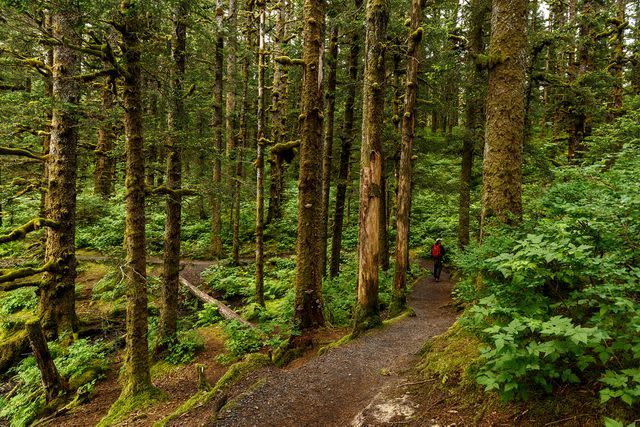
Susan Portnoy/Travel + Leisure
At the north end of the Aleutian chain, I took a zodiac tour of Geographic Harbor within Katmai National Park. Its reputation for Land of the Lost cliffs and abundant wildlife was soon validated. A scruffy brown bear strolling along the waterline passed us, floating a few yards offshore. Two days later, I saw four black bears, a mother, and two cubs during an optional (and pricey) excursion. From an elevated platform, I hiked half a mile into the Tongass National Forest, to see the Anan Creek riverbed. During the salmon run, the shallow pools formed by boulders and fallen trees attract bears to the creek’s proverbial barrels.
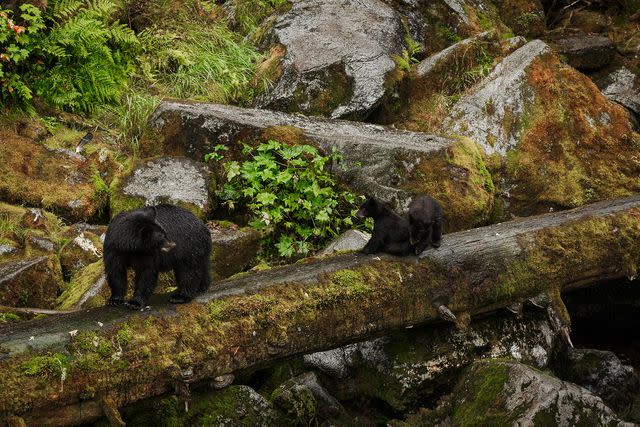
Susan Portnoy/Travel + Leisure
The constant throughout the journey was Alaska's enduring natural beauty. Heading east toward Vancouver, I joined a small group kayaking on Icy Bay. Paddling a double canoe, another passenger and I glided through a sea of chunky ice floes shed from a trio of tidal glaciers nearby. But nothing earned my iPhone’s attention more than the snow-covered peaks of the 18,000-foot Mount Saint Elias looming beside us.
On board, I spent much of my time chatting with fellow passengers on the open-air observation deck, where naturalists were on tap to point out birds and marine life. Otherwise, a steady stream of daytime lectures on location history, wildlife, marine animals, photography tips, and citizen science kept me busy. (I often watched via live stream from the comfort of my suite).
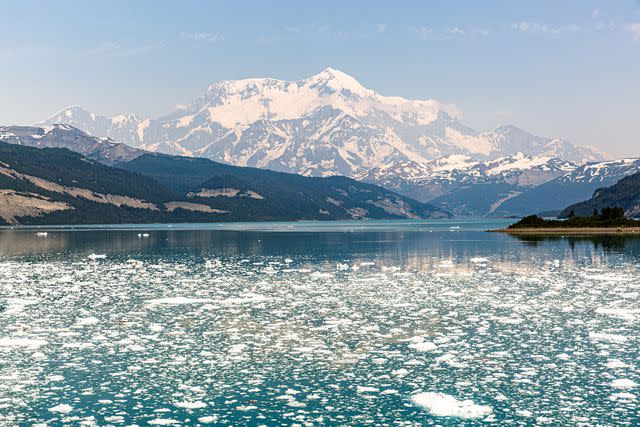
Susan Portnoy/Travel + Leisure
My favorite storyteller was Norma Charlie–Runfola, a sweet and soft-spoken Yu'pik native. She boarded the boat mid-journey, invited by Hurtigruten to travel with us as a guest. She shared her life growing up with traditional parents and grandparents on Scammon Bay. She gave four talks, all a wonderful hodgepodge of family photos, anecdotes, and native dances.
At night, I would grab a drink with a newfound friend and chat about the day, or unwind in the Norwegian sauna. I tended to turn in early, preferring to relax in my spacious suite with a glass of wine. I’d pore over my photos or kick back with a movie from the vessel’s vast library. Mornings were my favorite. Normally a night owl, I woke at dawn, eager to see what world lay beyond my balcony. During a farewell toast, the captain said we’d traveled 3,325 nautical miles — and yet, we were still in the middle of nowhere.
For more Travel & Leisure news, make sure to sign up for our newsletter!
Read the original article on Travel & Leisure.